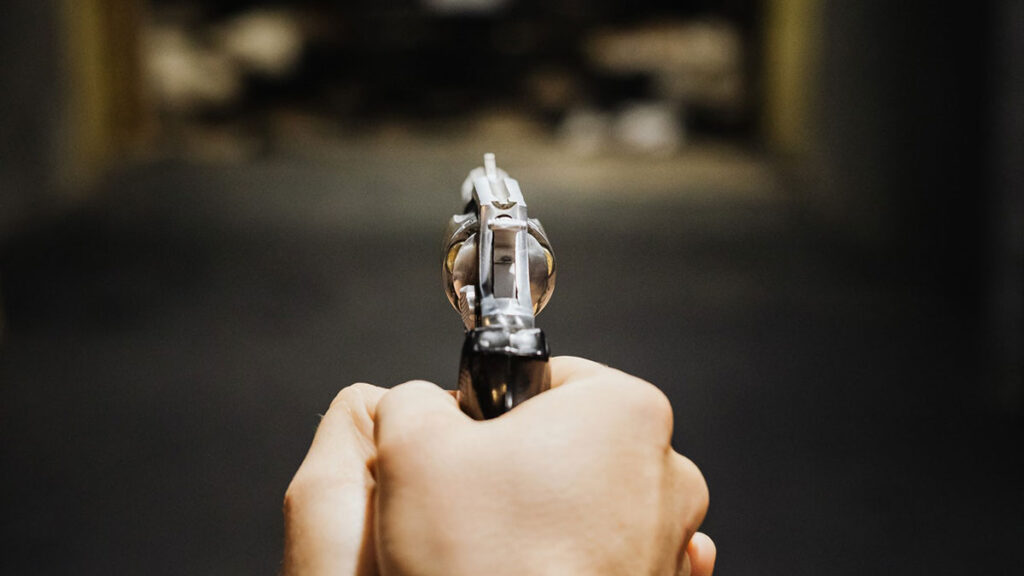
Informed Purchases are the Key to Practical Systems
Having been a firearms instructor as long as I have you hear all kinds of concealed carry tips. Beyond home defense, the choice could well be a handgun that can provide protection on the go every day. Today, the popular acronym is EDC, which stands for “everyday carry.”
The EDC handgun is often a compact polymer-framed model well-suitable for this purpose. However, as of Fall 2020, shoppers will probably encounter scarce handgun and ammunition inventories. The temptation could be to settle on anything, but that’s often a losing proposition. Perseverance and planning are tickets to a safer and more suitable long-term solution.
The CCW Triad
We know a little knowledge can be a dangerous thing. That goes for concealed carry weapons (CCW), and particularly for handguns!
Given the risk of serious but unintended mayhem through poor handling, a thorough grasp of firearms safety needs to be Priority One. At that point, a suitable handgun and gear can expedite the learning process for a rapid transition to acceptable skills. But, shortages aside, given the personal variables of experience, circumstances, and physique, how does one narrow down a “best” (or, for that matter, even “good”) system?
Well, perhaps we start this list of concealed carry tips with this three-step process.
#1 – Consider Some Training
The kicker of course is, due to current COVID hurdles, any in-depth firearms training could be out – at least for now. If available though, basic safety, function, and familiarization-fire courses are still useful, and they’re often a requirement for issuance of conceal carry (CC) permits. Better yet are multi-day programs geared for concealed carry which can offer advantages beyond essential shooting skills. They’re also great opportunities to get feedback from instructors and other attendees regarding practical carry methods, appropriate clothing and, of course, good handguns.
This type of training is never cheap, but those completing three-day (or preferably five-day) programs will be much better equipped to make informed purchases. If you can borrow a suitable school handgun (sometimes offered as an option), that’s not necessarily a bad thing. Of course, hands-on training is always best. The internet is an alternate source for both good and bad information, but Brownell’s has recently posted a series of good videos that cover CC-related basics.
Education has value. Plenty of hastily purchased handguns and gear are soon relegated to storage simply because they turned out to be poor carry choices.
#2 – Determine the Carry Method
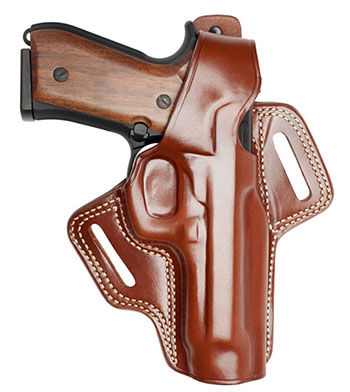
Obviously, an EDC handgun should be readily accessible. And, if presented, it should also be ready to fire. For this reason, almost universally, such a gun is carried fully loaded. The carry method we choose must ensure it won’t discharge unintentionally!
Although less discussed, custody is also important. I want a handgun firmly attached to my side and, based on years of lugging sidearms (aptly named), it’ll be securely positioned on my belt at around 3:00. This provides a consistent place for my dominant hand to go via seared-in muscle memory, and it also offers reassurance. Based on a previous unpleasantness, I get downright squirrely if the inside of my forearm can’t verify the handgun’s presence on a regular basis. This carry-location is fairly common, but physique and climate can be factors.
Summers are short in my area, so jackets are the norm, and they nicely accommodate my outside-the-waistband (OWB) preference. Others use an inside-the waistband (IWB) holster, which can easily hide a handgun, even under an untucked shirt. Some move the gun forward to the appendix region (IWBA) for better accessibility and comfort, but a legitimate concern is the muzzle’s orientation.
Typically, it’ll point toward crucial anatomical parts. For deep concealment, some folks use elastic belly-band types. Moving higher up the anatomy, shoulder holsters hide well under coats but they can also introduce re-holstering hazards. Typically, the process becomes a two-handed effort that can result in a wavering muzzle. Horizontal designs can exacerbate this concern by sweeping the muzzle past others to the rear.
For these reasons, shoulder and cross-draw holsters are rarely allowed on the firing lines of shooting schools. I have used small pistols fitted with clips designed to hook over a belt, but they seems less secure than a holster (energetic movements can reveal such flaws, including exit of vehicles). A holster positioned on a shooter’s strong (or dominant) side is pretty much a standard requirement among training sources.
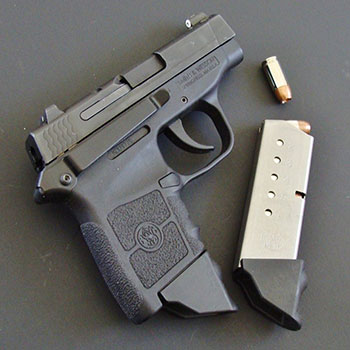
Handguns are also carried in briefcases and purses. Trouble is, Lost & Found Departments are full of ‘em, not to mention others outright snatched. A CCW fanny pack can be a fair compromise, assuming it’s designed to safely carry a gun.
We wound up issuing gun-designed units to a few plainclothes troops filling caseworker slots. Being designed specifically for handguns, they safely oriented muzzles while affording effective access. Not as fast as a belt holster, but still useful. Today’s derivatives include sling pouches and facsimile phone pouches.
Pockets are generally not advised unless the gun is slipped inside a properly designed no-slip sheath, best reserved for small secondary “backup pistols” which are difficult to shoot well. Ankle holsters are also the domain of little guns. Most of us will be better served by something else; small enough to hide, but large enough to provide useful accuracy and essential recoil-control.
IWB-appendix has really caught on, possibly due to increasingly cherubic physiques. Quick access is another advantage (including the support hand if need be). For all IWBA fans, shorter barreled models provide greater comfort, especially when seated. This is less of an issue at standard 3:00 – 4:00 positions where longer sight radius can improve accuracy and velocity. Actually, many of today’s IWB holsters are surprisingly comfortable. Probably for this reason, the recent spate of short-barrel pistols has morphed into slightly longer versions.
As for the above-mentioned off-person carry methods, they can introduce risks of loose foreign objects (lipsticks, keys, or pens) entering a trigger guard. Results can be catastrophic, making a pistol with an active safety lever a worthwhile investment.
#3 – Seek A Suitable CCW Handgun
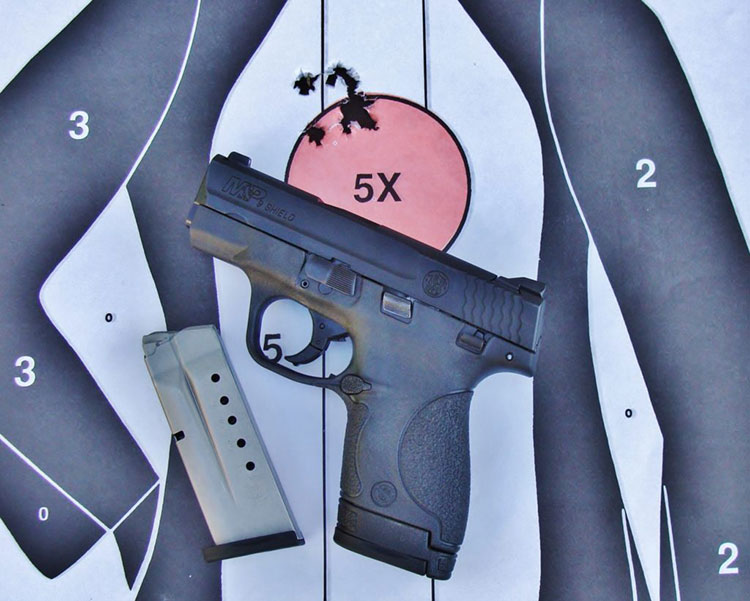
Today, great choices abound – assuming you can find them in stock. Everybody and their uncle is making a nifty smallish-but-useful EDC handgun. As often as not, it’ll be a mid-capacity striker-fired 9mm of around 3 ½” (or a recent 4” iteration) with enough mass for effective control by most shooters. Manual cycling of a slide can be the greater hurdle for some due to typically stiff spring tension.
A classic example is my S&W 9mm Shield, which nicely meets my needs while providing utter reliability. However, I’ve watched others struggle while manually locking its slide to the rear. Hence the appearance of S&W’s .380 and 9mm EZ Series which afford much easier operation in only a slightly larger package, with some extra safety features to boot. Not too large and not too small, it covers most bases nicely. There are other great choices too from manufacturers like Glock, Sig, Springfield Armory, etc.
Today, quality weapon lights are increasingly carried for very good reasons, including positive target ID. A pistol that can mount one is certainly worthwhile (especially when supported by proper training per above).
Small or mid-sized revolvers can work, but don’t forget the disassembly aspect. Guns that pose cleaning hassles are those most often neglected. After all, the gun you desperately need won’t do you any good unless it works – and only then if you actually have it! If it carries poorly you probably won’t. So, challenging as it can be at the moment, hands-on examinations are still the best bet.
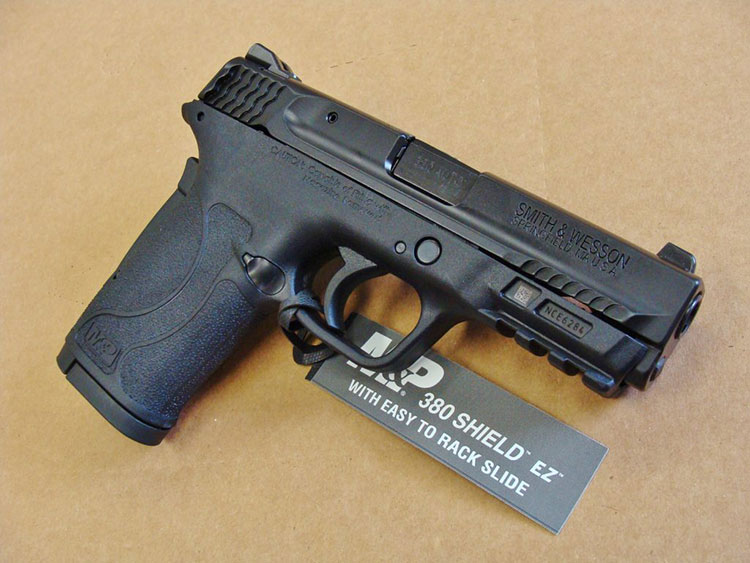
Additional Concealed Carry Tips
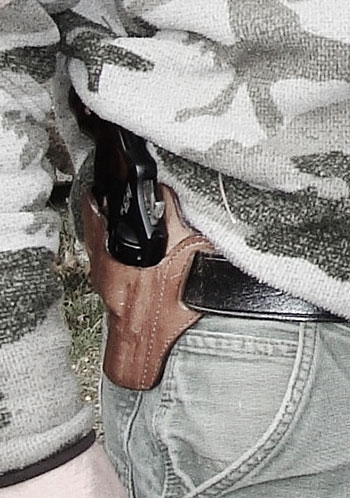
Let’s consider the various items that will constitute your system. Lights are newer additions. A spare magazine and phone are other common accoutrements – not to mention the gun.
Holsters and Belts
These key items appear together by no coincidence. Beyond increased security and better support of equipment, a durable belt is the foundation of a good draw. A holster that fits it snugly is more likely to stay put for improved retention and consistent access of the gun.
Concealed Carry Holster Selection Tips:
- Secure attachment system: Some of the new modular designs are really good. Some that easily clip on a belt can also pop off with minimal effort.
- Covered trigger guard (and shielded mag release): Provides essential protection from wayward objects including fingers, bunched clothing, drawstrings, etc.
- Facilitates re-holstering, using only the shooting hand: Eliminates the likelihood of muzzle-sweeping the support hand.
- Reasonable degree of retention: The holster should contain the gun when inverted and given a shake at its carry weight (with an empty chamber!). An adjustment screw helps. An active retention system is even better assuming it can be released as your firing grip is established.
You may wind up with several holsters, based on seasonal requirements or trial and error. Flaws are revealed through use, or better, through trials, vehicles being one example. Gun access can become difficult and some combinations may even trip a magazine release.
Chairs with armrests are also worth testing. Wiggle around and factor dress into these experiments. Regarding clothing, especially with striker-fired designs that require just a trigger press, avoid untucked baggy types that could wind up inside the holster.
Ammo and Spare Magazines
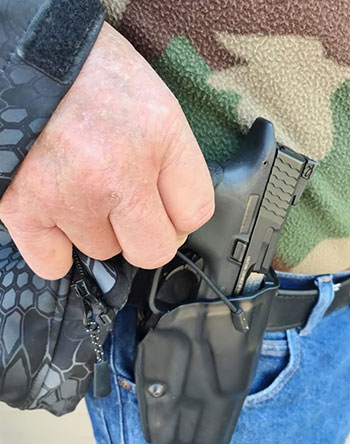
Some folks just go with the ammo in their gun, but life can be full of unexpected twists. Picture your magazine sailing out of the gun during a draw. Sounds far-fetched but we’ve seen it more than once, usually during fast-paced range drills. More often, magazines are accidentally disengaged or dumped, at which point a spare can become precious. Sometimes too, the expedient stoppage solution involves a quick exchange. Plus, a reload is reassuring. Revolver owners can easily slip a flat speed-strip in a pocket. Spare ammo is good – assuming you can reach it…
Ammo Accessibility
Think Murphy’s Law. We train our tactical assets on this premise: True defensive capability calls for the ability to run the gun with either hand, from any position, and in any light.
Easier said than done. Actually, it takes lots of training. The Devil is in the details, but a reload stuffed randomly in a pocket can make the case. Try accessing it from sitting (vehicles) or kneeling (low cover). An injury to the dominant hand can make things worse. For these reasons, I position a holster and magazine (or speed-loader) pouch securely on my belt where, if need be, I can reach it with either hand. In a pinch, a back pocket can also work, especially for loose ammo.
Keeping Custody
There are two designated locations for my EDC gun: on my hip, or in a secure container – period!
Those using off-person carry methods can be at greater unattended-firearm risks without a standard operating procedure for removal and safe storage of their system (in other words, don’t just randomly set it down). A safe routine helps, but sometimes it can be broken. More than one gun has been left on a toilet tank or bathroom door-hook, a risk eliminated through careful positioning in your underwear.
I know an LEO who checked out of two motels without his off-duty handgun within a ten-year period after leaving it underneath a pillow (miraculously recovered both times through the diligence of staff).
Designated Clearance Area
Think about the safest spot to unload the gun; somewhere with a safe backstop. The latest secure handgun containers are great but, sooner or later, you’ll need to unload the gun. For starters, how about regular cleaning? Pick a spot where loose rounds can be recovered.
Defensive Ammo
It’s best not to rechamber the same pistol cartridge more than a few times. Rims can get buggered and bullets can telescope into their cases from feed-ramp impacts, negatively affecting feeding and pressure. Simple fix: Relocate this round to the bottom of the magazine (you can even mark the headstamp). After all have been rotated shoot ‘em off as practice ammo. FYI, some solvents (like WD-40) can kill live rounds.
CCW Handgun Maintenance

I know several people who maintain a handgun for security, but are clueless about disassembly. Total fail!
The greater majority are probably just slothful. None of it is rocket science, but odds of essential cleaning will improve if the gun supports the process. Hence the above selection comments regarding easy disassembly. Skip oil changes and your vehicle will die. Skip gun cleaning and you could. Also, to improve odds of longevity, remove any live ammo from the cleaning area before proceeding.
Concealed Carry Tips Conclusion
These concerns can obviously impact your gun choice. It’s worth mulling over the closely interwoven various factors because, if you need the gun, you’ll need it ASAP. And, by the way, that’s more likely to occur with proper training and regular practice!
Again, the topic is concealed carry. Beyond any legal ramifications (see CCW insurance comparison), a firearm that remains invisible is less likely to be snatched. Also, the user can just “blend in” with a crowd. A presentation will, in legalese, require an “articulable reason” – and, quite possibly, the services of an attorney. Assuming the day ends uneventfully, don’t forget that safe storage system.
Want more handgun tips? Read my book Handguns: A Buyer’s and Shooter’s Guide.
Have other concealed carry tips? Post ’em in the comments section.

2 comments
1.) Training to use a handgun is ‘not’ an option. Get proper training and also be trained on how to retain your firearm and practice, practice and then, practice some more. 2.) Understand that ‘you’ will be held accountable for a negligent discharge, any rounds going downrange that hit anyone but your intended target, if your firearm is taken from you and used in the commission of a crime or if you cannot prove you had no choice but to use your firearm. 3.) You must be mentally prepared to use your firearm if need be and for any fallout that may happen because of it’s use. 4.) Practice, practice, practice.
Carrying a firearm, concealed or otherwise, it not a game, a political statement or something to do for ‘bragging rights’. We ‘do’ have the ‘right to bear arms’, but only you can decide if it is right for you. It is not a decision to be taken lightly. For the record…I always carry two. Just a habit I picked up while doing my thing in the military. no one has yet even noticed even one of them, even when I wear only a T-shirt. Oh, I wear pants, too.
Be safe and train properly. I almost forgot…make sure you have fun, too.
hot in tex so i carry mine in a sling pack…with spare mags, light, small med kit…